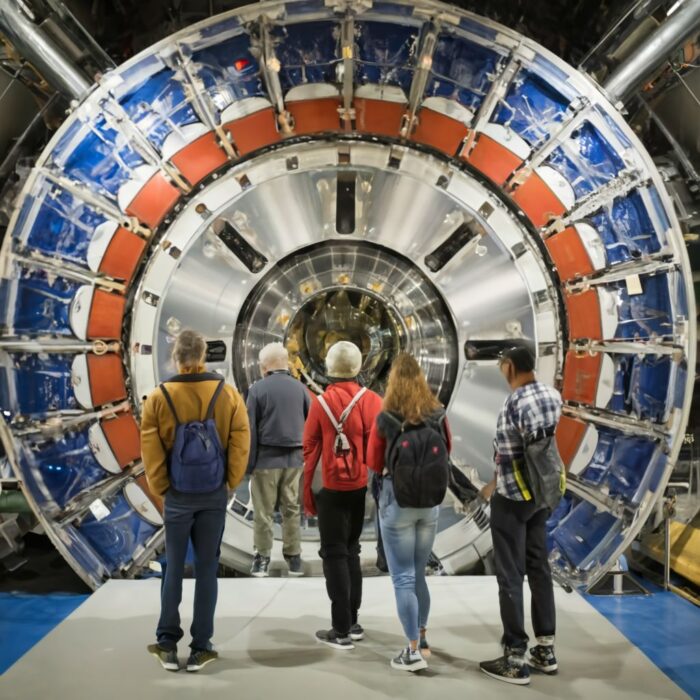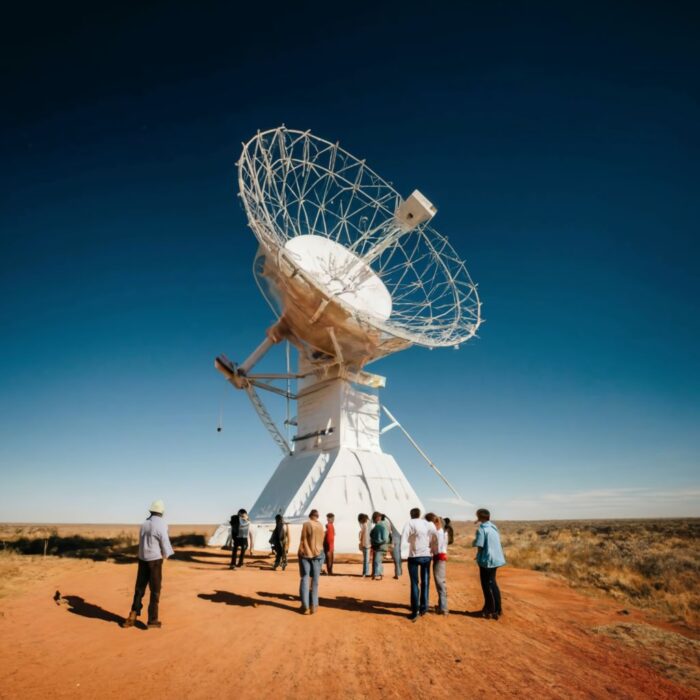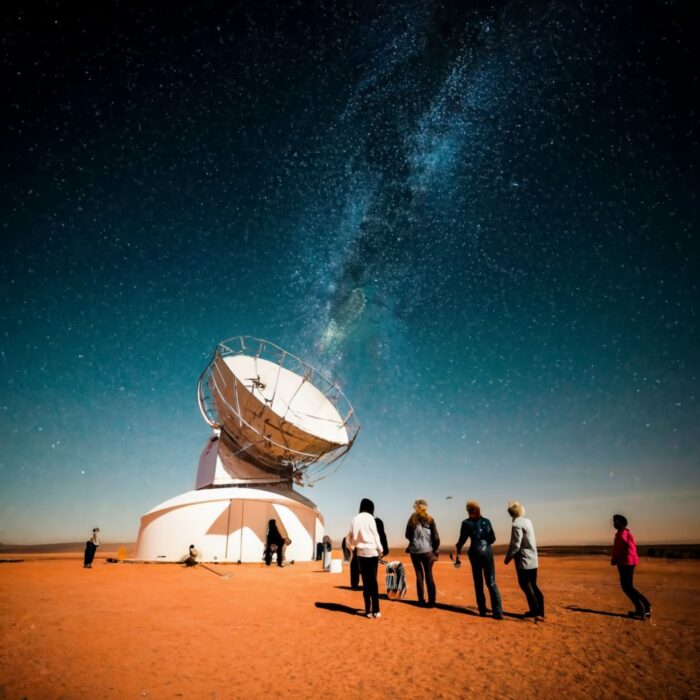The HSRC is playing a key role in an exciting multi-national socioeconomic study known as CASEIA. Funded under the European Union’s ATTRACT initiative, CASEIA looks at how breakthrough technologies coming from fundamental research can provide a better and more sustainable life for all. By Kim Trollip




AI generated images showing ordinary people and examples of big science projects in the background. But what do such projects mean for broader society beyond economics? And how can they help us live more sustainable lives?
ATTRACT can be described as an experiment that seeks to leverage the brilliant ideas that exist in big science infrastructures and share them with the world to create value and have an impact on society. The socioeconomic projects like CASEIA measure the results of this experiment. The first goal is to measure what ATTRACT has done and what recommendations they have for a second intervention along the same lines. The CASEIA team’s second objective is to develop a toolbox that allows researchers to measure the impact of big science beyond econometrics.
What is big science and what is blue sky research?
Big science and blue skies research are often questioned in terms of return on investment for money spent. This is more so than ever, as the world becomes more polarised and inequality deepens. But others say big science is increasingly seen as a means to help address some of the grand challenges of our time.
Big science is a term used by scientists and philosophers of science to describe scientific progress through large-scale, often long-term and often multi-billion dollar projects, usually funded by national governments or groups of governments. The Square Kilometre Array project, hosted partially in South Africa, is an example of a big science endeavour. Big science has been criticised in a world where increased government funding has often meant increased military funding, which some claim subverts the enlightenment-era ideal of science as a pure quest for knowledge. Others simply criticise the vast amounts of money being spent when there are other urgent needs such as poverty alleviation and climate change risk mitigation.
The big science proponents insist that it pushes technology to the edge to achieve stunning breakthroughs that dramatically extend the frontiers of science, while inspiring the next generation of scientists and capturing the imagination of the public.
Blue skies research, also called blue sky science, explores fields without immediate practical applications, driven by curiosity rather than predefined goals. It’s often synonymous with basic research. Due to the inherently unpredictable nature of the return on investment, projects with ambitious goals are occasionally met with political and commercial disfavour, leading to a redirection of funding towards research deemed to offer more dependable profitability or practicality.
Advocates argue that its unexpected advancements, like those in genetics and stem cell biology, can be more valuable than agenda-driven research. Gravitation theory for example is used in precise GPS location, and quantum theory is used in nuclear magnetic resonance imaging devices for medical purposes. And these are just some examples of the multitude of applications.
The role of the HSRC in assessing the societal value of big science
What makes the CASEIA project interesting is that it looks at how ATTRACT has led to impacts such as strengthened innovation ecosystems, commercial applications of innovation, skills development, and broader social goods. It in some ways seeks to provide evidence of the social value of big science and blue skies research.
CASEIA coordinator Sonia Utterman, a physicist and science manager, was looking for an experienced social scientist with an interest in the field to join the project. That was when she invited the HSRC’s Dr Michael Gastrow to join the study. Dr Gastrow’s research focus is on science and technology policy, including societal and economic impacts, science communication, and the public understanding of science. He has worked and published extensively on the economic and societal dynamics of astronomy, physics, ICTs, biotechnology, and manufacturing technologies. He is the Director of the Science in Society unit within the Impact Centre of the HSRC, where he leads a team of researchers, communicators, and engagement specialists active at the interface between science and policy. Read more about the HSRC’s approach to impact.
*NOTE: CASEIA is an acronym drawn from the Comparative Analysis of Socio-economic Impact in two particle Accelerator case studies. It aims to measure the ATTRACT initiative through three case studies as well as to develop a toolbox that allows them to measure the impact of big science beyond econometrics. CASEIA is coordinated by the Facility for Antiproton and Ion Research (FAIR) in partnership with Fraunhofer-Gesellschaft, the HSRC and Steinbeis.


